 Music
Music  Music
Music  History
History 10 Less Than Jolly Events That Occurred on December 25
 Weird Stuff
Weird Stuff 10 Funny Ways That Researchers Overthink Christmas
 Politics
Politics 10 Political Scandals That Sent Crowds Into the Streets
 Weird Stuff
Weird Stuff Ten Bizarre Facts About The Doge Meme
 Our World
Our World 10 Ways Your Christmas Tree Is More Lit Than You Think
 Movies and TV
Movies and TV The 10 Coolest Stars to Set Sail on The Love Boat
 History
History 10 Things You Didn’t Know About the American National Anthem
 Technology
Technology Top 10 Everyday Tech Buzzwords That Hide a Darker Past
 Humans
Humans 10 Everyday Human Behaviors That Are Actually Survival Instincts
 Music
Music 10 Surprising Origin Stories of Your Favorite Holiday Songs
 History
History 10 Less Than Jolly Events That Occurred on December 25
 Weird Stuff
Weird Stuff 10 Funny Ways That Researchers Overthink Christmas
Who's Behind Listverse?

Jamie Frater
Head Editor
Jamie founded Listverse due to an insatiable desire to share fascinating, obscure, and bizarre facts. He has been a guest speaker on numerous national radio and television stations and is a five time published author.
More About Us Politics
Politics 10 Political Scandals That Sent Crowds Into the Streets
 Weird Stuff
Weird Stuff Ten Bizarre Facts About The Doge Meme
 Our World
Our World 10 Ways Your Christmas Tree Is More Lit Than You Think
 Movies and TV
Movies and TV The 10 Coolest Stars to Set Sail on The Love Boat
 History
History 10 Things You Didn’t Know About the American National Anthem
 Technology
Technology Top 10 Everyday Tech Buzzwords That Hide a Darker Past
 Humans
Humans 10 Everyday Human Behaviors That Are Actually Survival Instincts
10 Depressing Fashion Trends We Hope History Will Never Repeat
They say that beauty is pain, but some fashion trends are so horrifying that they’re actually painful for everyone who sees them. Strange moments in history have created some pretty strange fashions over the years, looks that (hopefully) will never be repeated or ever be seen again now that their time to be trendy has ended. Fashion may be cyclical, but some looks should never be dusted off.
You might have had the experience of stifling a giggle upon seeing what your parents were wearing in old photos, but those old clothes have nothing on the entries in this list. Look back at history’s most depressing fashion trends, and vow here and now never to wear a flour sack—no matter how many people are doing it!
10 Flour Sacking
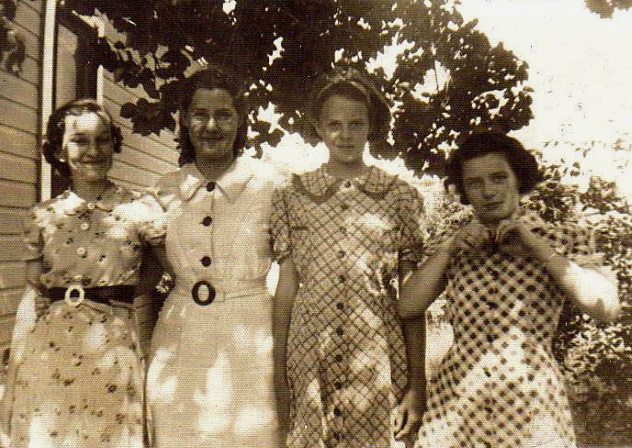
What’s more depressing than a trend born of the Great Depression? In an era where nothing in America was wasted, flour sacks became the go-to dress material for women everywhere.[1] The height of the trend came in the late 1930s and early 1940s, when rural fashion rose to its heyday. Country women who could sew neatly and quickly became the fashionistas of their era and dominated the national sewing competitions that sprung up across the US.
Thriftiness was in fashion, and the fashion trend known as flour sacking caught on everywhere. Women who were really adept at flour sack dresses even managed to earn extra money by selling their dresses to others. Companies like the National Cotton Council and the Textile Bag Manufacturers Association sponsored contests where women could show off their flour sack creations, which gave flour sack dresses their own sort of fashion clout.
By the 1940s, savvy sack makers were catering to the trend by producing bags in brighter colors and with more intricate patterns, hoping their products would be favored because of the prettier packaging. Large sacks of feed and flour were particularly desirable, as they provided much material. So when life gives you flour sacks . . . make a dress?
9 The TB look
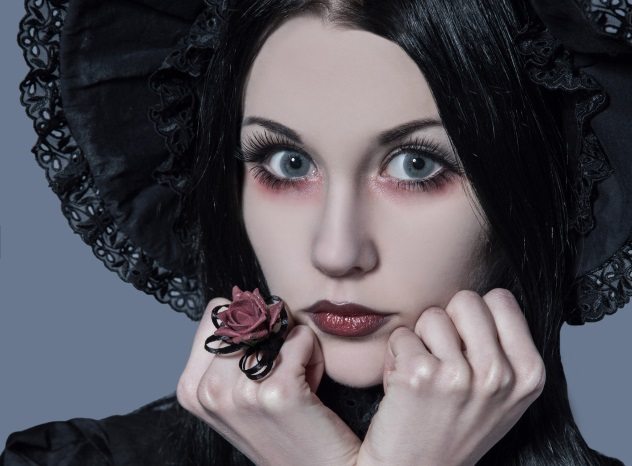
Fashion has seen many strange trends in history, but one of the most questionable is the popular TB look. It was all the rage during Victorian days to mimic the effects of the disease, which made people look very pale and skinny in its final phases (just before they died).[2] The look was partially inspired by popular literature of the day, particularly tragic tales like La Dame aux Camelias.
Because tuberculosis was rampant and not just the stuff of literary fancy, the TB look became a viable—and desirable—fashion trend. The look was popular for decades, reaching its height from 1780 to 1850. The thin, pale look brought on by the disease already fit in with beauty ideals among the upper classes. But this is where fashion sense and common sense are directly at odds with each other because for generations, women living in the Victorian era starved themselves and avoided sunlight so that they could look more like they were wasting away from tuberculosis. How attractive.
8 Hobble Skirts
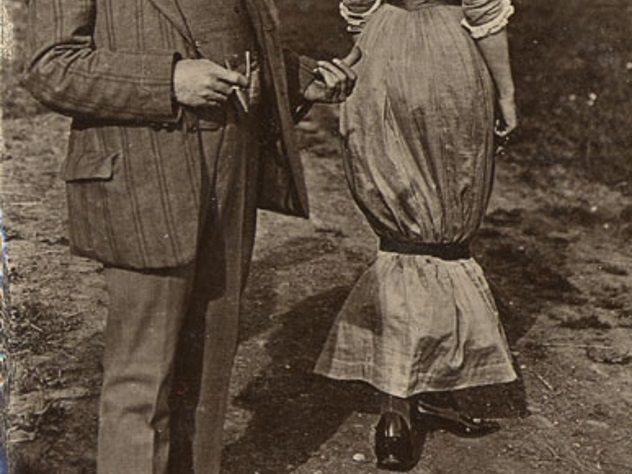
In what now seems impossible, the hobble skirt was so popular that no one knows who really invented it because everyone wanted to take credit for it. It was the 1910s, and women were ready to express their fashion freedom by getting rid of the trends that shackled them in the past.[3] Gone were the layers of petticoats, the big hoops, and the extra fabric. Instead, women started lashing their ankles together.
As soon as the skirt made its way from Paris to the US, it became the stuff of fashion scandal. Cartoonists drew caricatures of women attempting to walk in the restrictive skirts, and The New York Times wrote a giant article about the impact to the textile industry because so many petticoats would be sacrificed to the new trend. The story called the skirts “an ungraceful and immodest freak of fashion” and asked readers to imagine 10,000 families starving as a result.
But the trend just would not go away. Soon, so many women were wearing hobble skirts that streetcars and trains had to lower their entrance steps so that the ladies could still successfully climb aboard with their steps restricted. The hobble skirt trend may have continued to flourish, in fact, if World War I hadn’t changed everything for fashion the world over. New restrictions on fabric and a scarcity of manpower in Paris upset the fashion industry and put an end to the days of the hobble skirt. Happily, women chose not to go back to their petticoats just the same.
7 Scheele’s Green

If beauty is pain, then Scheele’s green is the most beautiful color ever.[4] Karl Scheele was a chemist in Sweden when he created the pigment in the 1770s. The pretty green hue he found was cheap to make and easy to use in all sorts of items, from clothing to wallpaper. And that’s really too bad, since Scheele’s green was made with arsenic. Oops.
The gorgeous green was used in ball gowns and curtains, pretty much any home fabric, and was so commonplace that it surrounded none other than Napoleon in his final days. In fact, the arsenic-infused pigment may have contributed to his death. Since Scheele’s green was a hot color in Victorian Britain and elsewhere in Europe, he certainly wasn’t the shade’s only victim.
Scheele’s green was used in fashion for about 100 years, a century of death, before another chemist decided to take a good look at the pigment and discovered its true nature.
6 Bird Masks
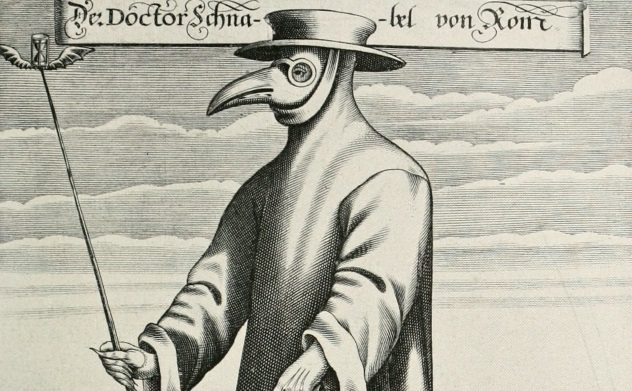
Bird masks were part fashion trend, part professional necessity. The bird masks were first worn during the 17th century as a defense against the plague, but they inspired centuries of costume fashion and linger to this day as a popular masquerade choice.
The plague was deadly; it had decimated around one-third of Europe’s total population back in the 14th century, and it had periodically reared its ugly head since. Doctors roamed the streets and went into villages, tending to the afflicted. But to get the job done, they needed these masks.
The beaks on the masks weren’t just fashionable; they were functional.[5] The masks were stuffed with fragrant flowers and herbs and worn directly over the nose. This kept the doctors from smelling the scents of death and decay as they attempted to haul away the dead bodies. The masks were worn due to the miasma theory, which held that disease was transmitted by poisonous, foul-smelling gas in the air, which was produced by decay.
5 Crinolines
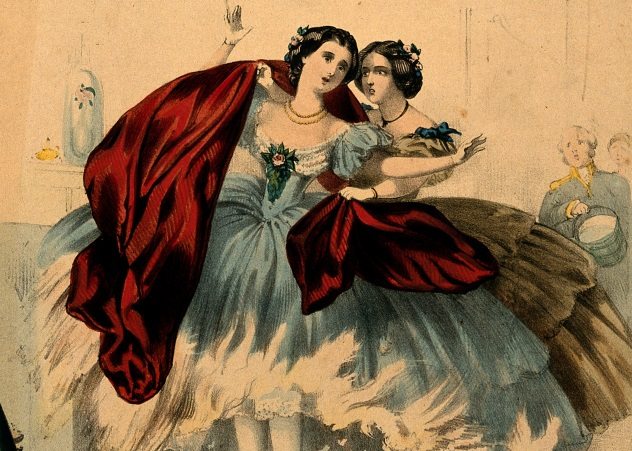
It’s a must-have for every movie set in the latter half of the 1800s, and it featured so much in Gone With the Wind that it should have been given starring credit. It’s the crinoline, one of fashion’s deadliest and dumbest trends of all time. Made to give women’s skirts a big bell shape, crinolines, stiff petticoats that sometimes even had frames, literally killed thousands of people during their time in the fashion spotlight.
At their height in the 1850s and 1860s, crinolines made skirts too big and too puffy. That made them dangerous. In those two decades alone, an estimated 3,000 women in England died due to fires caused by crinolines.[6] Big skirts and candles don’t mix well; nor do they make it easy for people to quickly escape a suddenly burning building. Some women simply ignited as a result of standing too close to the fireplace, while others died in massive events.
The most infamous crinoline fire occurred in 1863 at the Church of the Company of Jesus in Santiago, Chile. As many as 3,000 people died due to the amount of flammable crinolines in the room. In 1864, it was estimated that almost 40,000 women the world over had died due to crinoline-related fires since 1850.
4 Bullet Bras
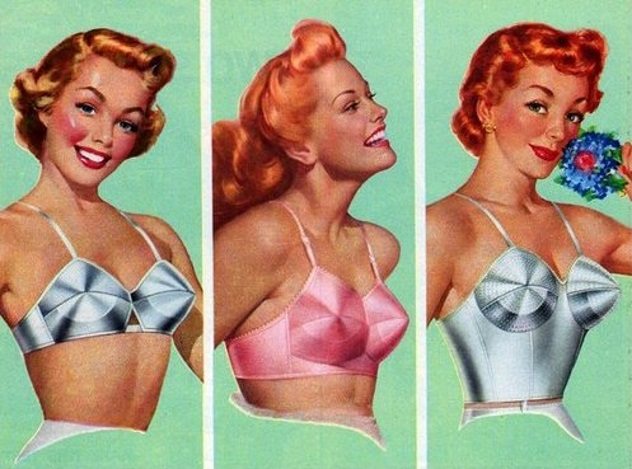
An anomaly that the world hopes will stay confined to the late 1940s and 1950s, bullet bras were everywhere for a few years. The sharply pointed bras were worn by all the well-dressed women, and some designs were truly dangerous enough to put out an eye. The bullet bra became the must-have accessory for the classic pinup girls of the era.
More properly known as the Chansonette bra, the bullet bra appeared in Frederick’s of Hollywood and soon became a fashion icon.[7] Part of the bra’s popularity was due to World War II and the nylon fabric restrictions it created; spiral stitching and different fabrics made bras stiffer and pointier.
The bullet bra faded into obscurity in the late 1950s with the rise of the softer, more gender-neutral fashions of the 1960s, though it did enjoy a resurgence in popularity thanks to Madonna’s 1990 “Blonde Ambition” look.
3 Armadillo Shoes
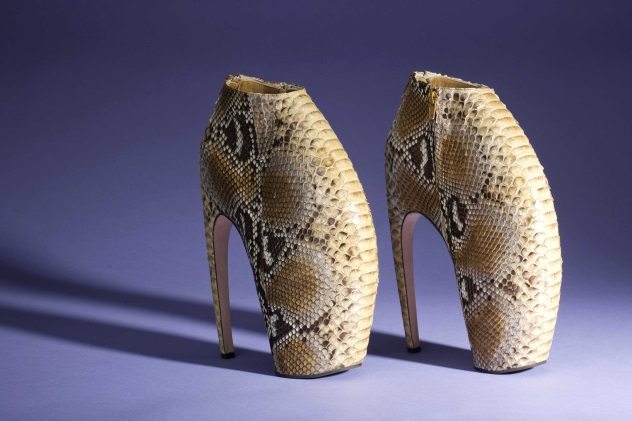
Though they haven’t been around long enough to really be historic, as they were designed by Alexander McQueen in 2010, armadillo shoes will surely go down as one of the worst of the worst. Everyone hopes these shoes will stay in the annals of fashion history, where they belong, never to be seen on a runway or at an award show again.
The first line of armadillo shoes were carved out of wood, which means they’re probably just as uncomfortable as they appear. The shoes were famously worn by Lady Gaga, who is notorious for bizarre fashion choices, and they sold for around $3,900 to $10,000 per pair.[8] Only a relative few were ever produced—and only for extremely special clients, such as Gaga herself. Though Gaga made them work, one Vogue fashion blogger admitted they are impossible to walk in. No surprise there.
2 Zibellinos
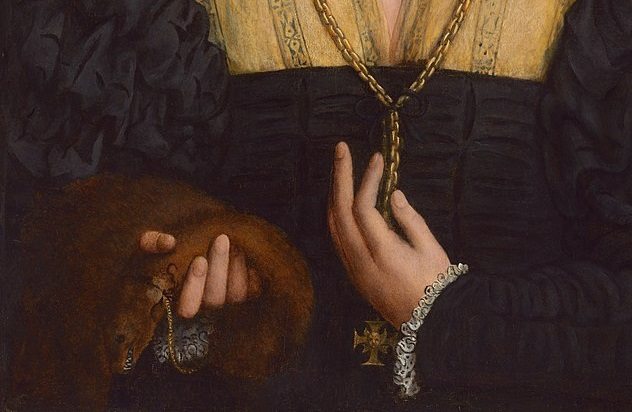
Also known as tippets and flea furs, zibellinos were significant in fashion and worn only by the very wealthiest. If you were a high-ranking noble or member of a royal family, you wouldn’t go anywhere without his must-have accessory that was truly one of the most awful things ever.
Basically, a zibellino is the pelt of a marten or sable . . . with the head still attached.[9] It’s worn simply draped over one arm, because that’s exactly where you want to hang your pelt. Sometimes, the heads were encrusted with gold and jewels.
It wasn’t until the end of the 16th century that faux versions were created to replace the actual animal remains.
1 Black Teeth
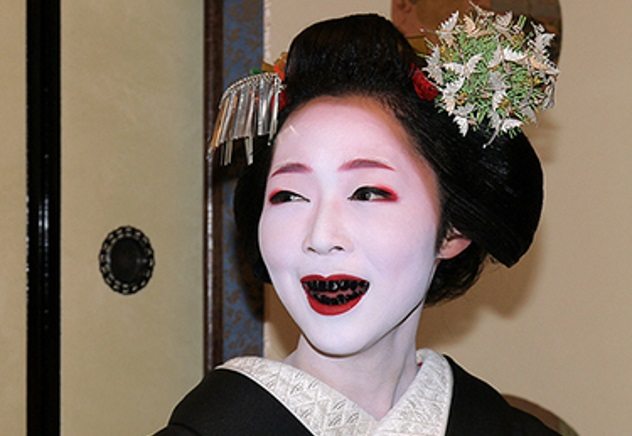
Today’s fashion is all about having white teeth, and you can’t watch TV or open a magazine without seeing an ad for whitener. But if you lived in Japan in the past, you’d need black teeth to be totally in fashion. Black teeth were a symbol of wealth and sexual prowess, particularly for women in Japanese society, for years.[10] To get the look, they drank black dye mixed with cinnamon and spices for taste. The practice, called ohaguro, was outlawed in 1870, and the white teeth trend caught on after the Japanese empress showed off her own non-blackened smile in public.
But as it turns out, black teeth were better teeth, health-wise, anyway. The dye mixture used to created the blackened teeth look actually protected them from decay because it had a lacquer-like effect on the enamel. The mixture even warded off certain bacteria to promote better overall health. Maybe this is one trend that will make a comeback?
KC Morgan is a professional freelance writer. She has written thousands of articles, on every topic from history to food hacks. Whether KC is explaining how to complete a DIY project or exploring the world’s mysteries, she’s writing about something every single day.
Read more about bizarre fashion fads from history on 10 Classic Fashion Trends That Seem Completely Bizarre Today and 10 Ways Our Ancestors Killed Themselves In The Name Of Fashion.








